How the Manhattan neighborhood of Turtle Bay got its name
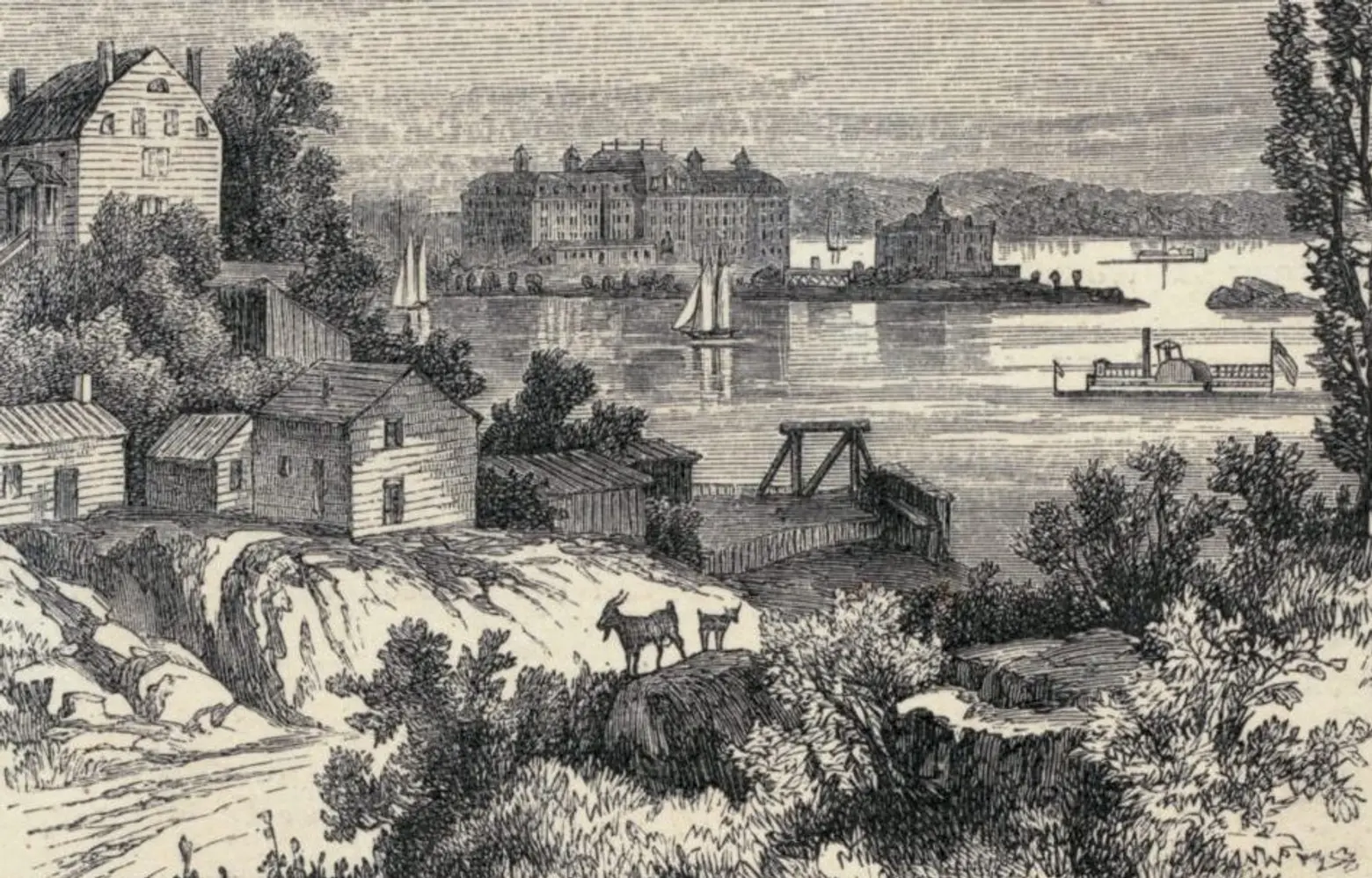
Turtle Bay and Blackwell’s Island around 1840 at the foot of what now is 49th Street, courtesy the Turtle Bay Association
The Manhattan neighborhood of Turtle Bay, a stretch of Midtown East that holds everything from skyscrapers to brownstones, has a history dating back to 1639. Modern-day New Yorkers might envision the area got its name from “hundreds of turtles sunning themselves on the rocks along the East River between 45th and 48th Streets,” as Ephemeral New York puts it. Back then, that’s where an actual bay was once located in Colonial-era Manhattan, surrounded by meadows, hills and a stream that emptied at the foot of today’s 47th Street. Some historians do think actual turtles lent to the neighborhood name, as they were plentiful in Manhattan at the time and were commonly dined on. But another reading of history suggests otherwise.
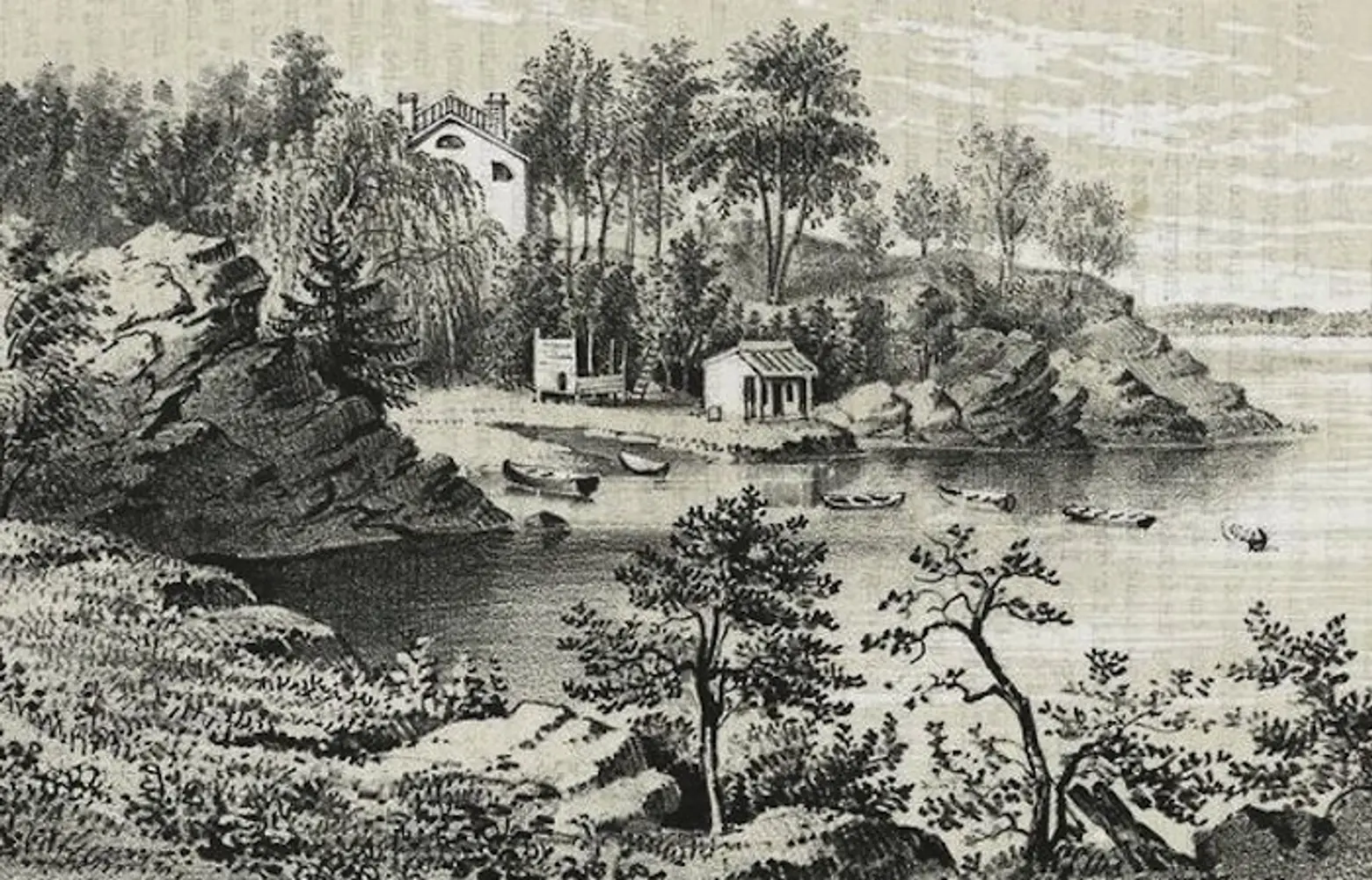 Turtle Bay in 1853, via the NYPL Digital Gallery
Turtle Bay in 1853, via the NYPL Digital Gallery
Turtle Bay, an actual cove of the East River, received its name back in the 17th century by Dutch settlers. As the story goes, the cove was shaped like a knife, so the settlers named it “deutal,” which is Dutch for “a bent blade.”
The neighborhood of Turtle Bay begins in 1639, with a 40-acre land grant given to two Englishmen by the Dutch colonial governor of New Amsterdam. The farm extended roughly from what is now 43rd Street to 48th Street, and from Third Avenue to the river. The Englishmen named the plot “Turtle Bay Farm.” Here’s where historians think the name was more likely a corruption of the Dutch word “deutal” rather than a reference to actual turtles in the bay.
Back then, the area filled with farms, houses and villas surrounding by picturesque hills and streams. But after the street grid system was initiated in Manhattan, the hilly landscape of Turtle Bay Farm was graded to create cross-streets. Between 1840 and 1850, the land was subdivided for more formal residential development.
But the name stuck as the area changed. According to the Turtle Bay Association, from its early days as a settlement through the Revolutionary War, the bay offered sailing ships a safe haven from winter gales and the capricious currents of the East River, making it important to the commerce of Manhattan. Shipbuilders established a thriving business there. And by the time Robert Fulton tested his steamboat on the East River in 1808, the wharf was teeming with breweries, carpentry shops, mills and industrial business.
Development of the neighborhood grew after the streets were gridded, but it really took off after the Civil War. Upon the war ending, the building of brownstones ultimately transformed the scenic landscape. The bay was filled in, and the waterfront became “a commercial sinkhole,” according to the Turtle Bay Association. “By 1868, the beautiful bay was filled in, its charms sullied by slaughterhouses, packing sheds, cattle pens, rotting wharfs, and railroad piers,” the organization says.
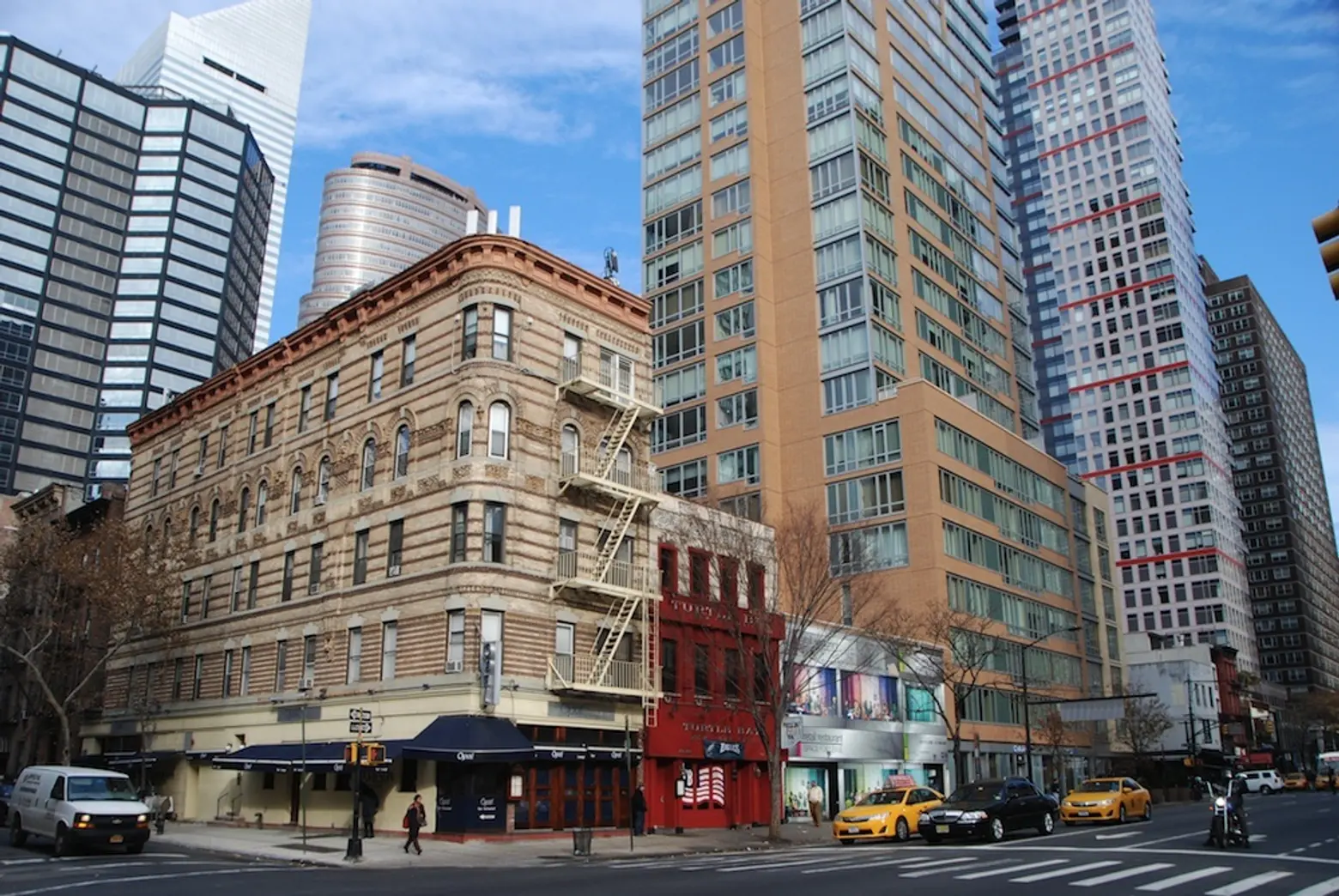 Turtle Bay today. Photo by Jon Mannion/Flickr
Turtle Bay today. Photo by Jon Mannion/Flickr
Immigrants flooded the area, tenements were built, and in the 1920s the brownstones were transformed back into fashionable townhouses. Today, the area is bustling with commercial activity, lined with towering skyscrapers, and still retains many of those historic townhouses. And despite the lack of turtles in the former bay, the name of Turtle Bay endured.
RELATED:
Get Insider Updates with Our Newsletter!
Leave a reply
Your email address will not be published.
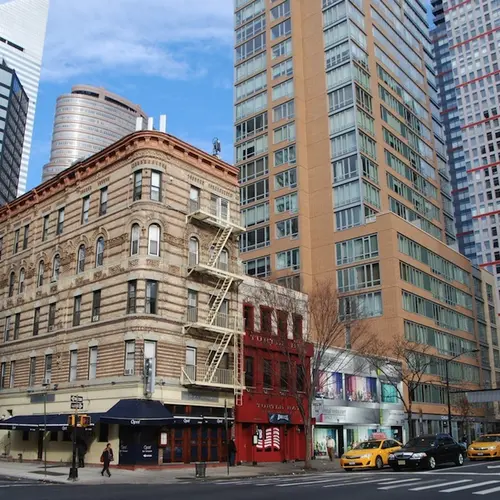
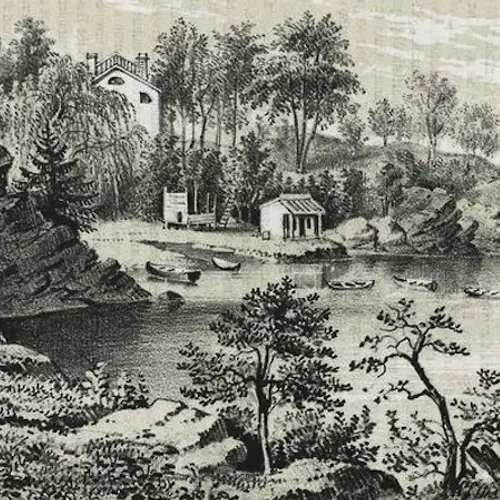
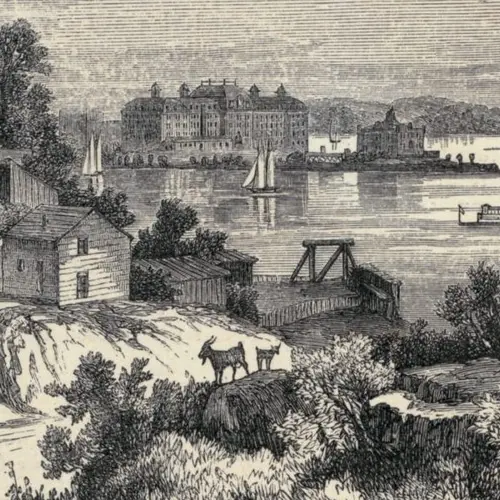
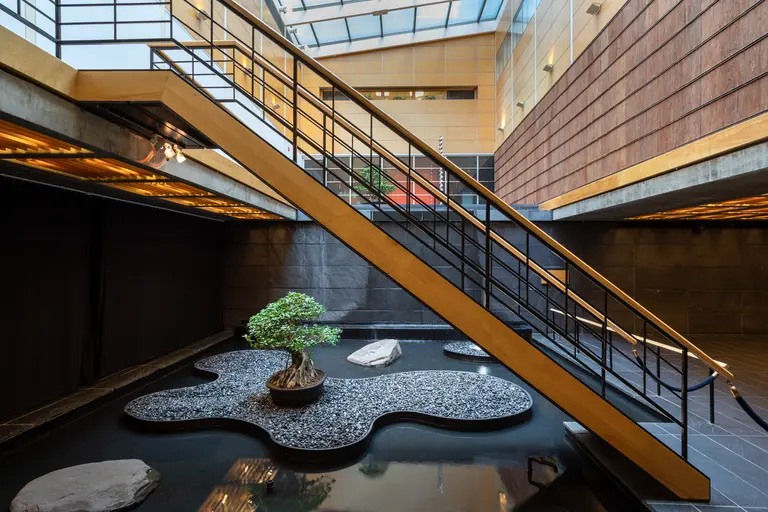

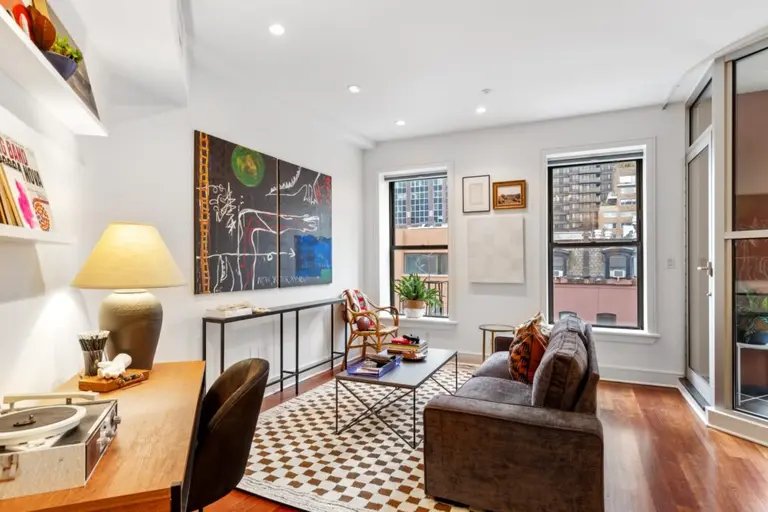









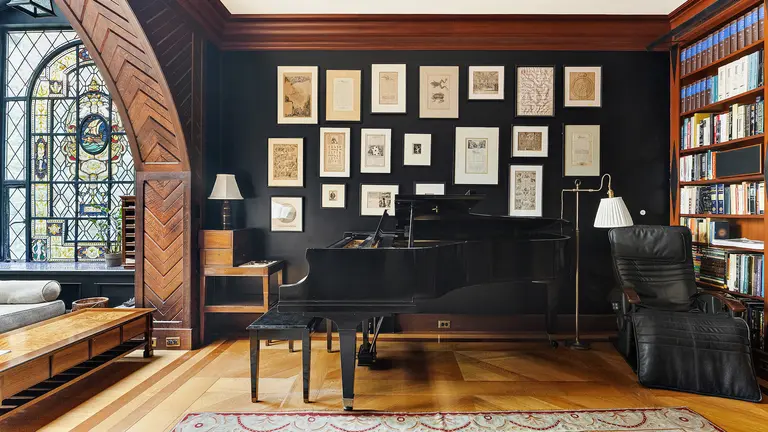

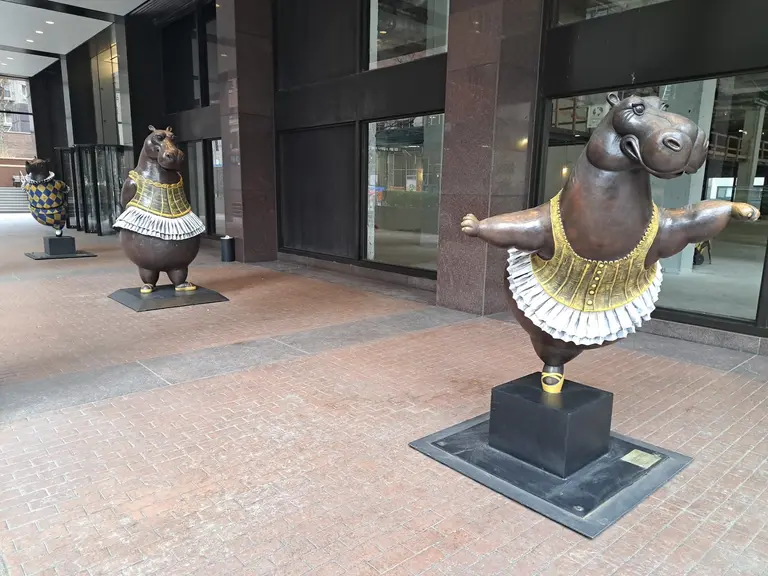
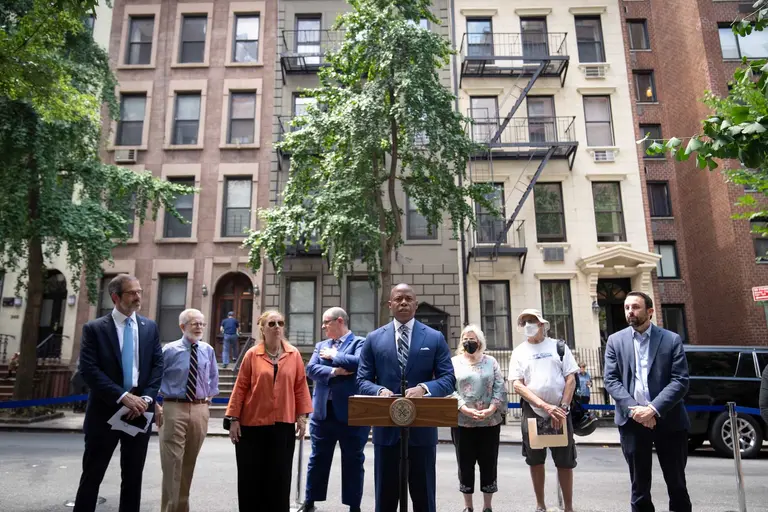












I can’t express how much I enjoy these history lessons!
I’m Dutch and I’ve never heard of the word “deutal”. Not even a word that would be close (in writing or pronunciation) in relation to knives or bent blades.
Maybe it was a word back in the day, but then it’s buried pretty good in history.
I wonder what the source of this article is?